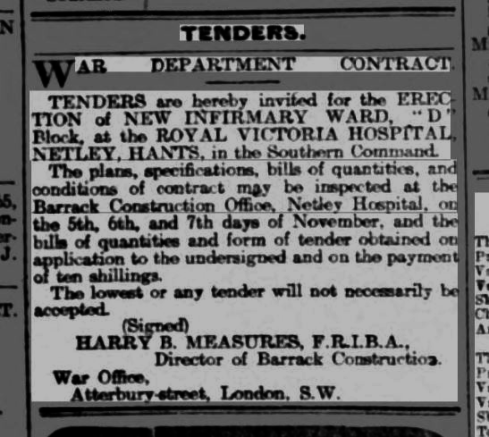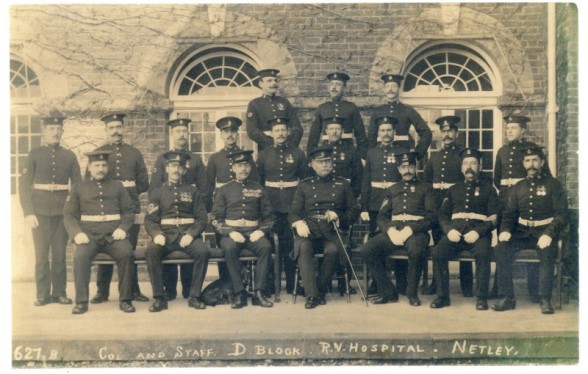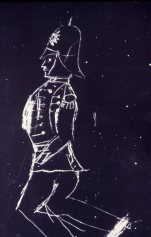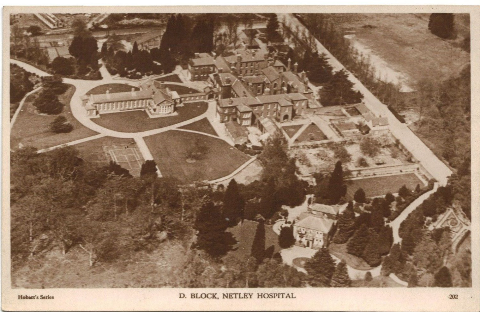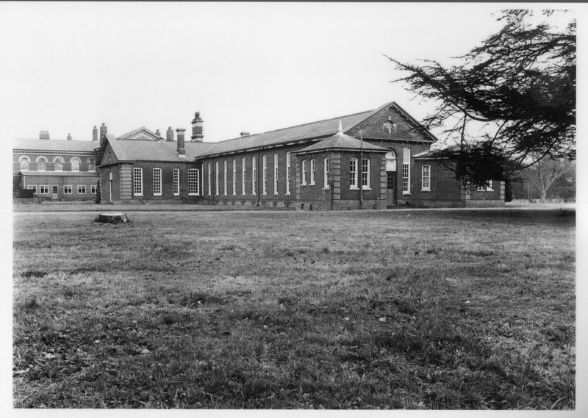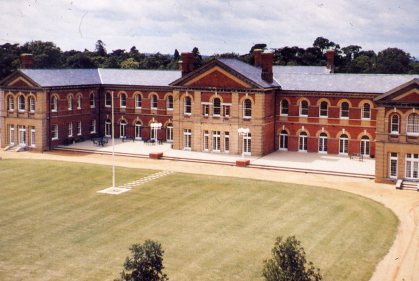
The "Asylum"
|
Timeline taken from http://studymore.org.uk/4_13_TA.HTM#Netley
Royal Victoria (Military) Hospital: 26.7.1866 Hansard question As there were 195 male
and six female military
service lunatics at Bow, would 60 places be enough at Netley? The "building now being erected", for insane soldiers was placed at Netley in "consequence of the Report of the Committee that sat in 1863, on the removal of the establishment from Chatham. It could hardly be called an asylum, because the patients were only placed there for the purpose of observation, and would after a short period be removed to their friends, or to private asylums". 1870 Asylum for insane soldiers opened: D Block.
1908 An extension built (E Block?)
1914 During the first world war the asylum had beds for 3 officers and 121 others. Major Charles Stanford Read (born 1871), Royal Army Medical Corps, was the Officer in Charge of D Block for the greater part of the war. In 1920 he published Military Psychiatry in Peace and War (London: H.K. Lewis, 168 pages) The average stay in D Block was five or six days. Soldiers were moved on. Read, C.S. 1920 (preface) calls it a "Clearing Hospital" and refers to "3,000 cases which were dispersed over various parts of the United Kingdom". Many went to the War Mental Hospitals at Liverpool - Napsbury - Warrington - Cardiff - Paisley - Crookston - Perthshire - Newcastle - Nottinghamshire - Belfast - Dublin -
16.6.1917 Wilfred Owen admitted to the Welsh Hospital, Netley, diagnosed with Neurasthenia. On 25.6.1917 he was transferred to Craiglockhart War Hospital for Officers, near Edinburgh
Read, C.S. 1920, page 42, says that in 1918 there were 4,470 War Hospital "beds available in the British Isles for mental cases. These War Mental Hospitals were: The County of Middlesex, Napsbury (350 beds); Lord Derby's War Hospital, Warrington (1,000 beds); Welsh Metropolitan War Hospital, Cardiff (450 beds); Dykebar War Hospital, Paisley (500 beds), and Auxiliary Hospital at Crookston (350 beds); Murthly War Hospital, Murthly, Perth (380 beds); Northumberland War Hospital, Newcastle (100 beds); Notts County War Hospital, Nottingham (540 beds). From the above Irish cases could be transferred to Belfast War Hospital (500 beds) and Dublin War Hospital (300 beds)."
World War 2 D block, Victoria House at Netley treated over 15000 patients, including Rudolf Hess
1950 an E block was added and the army psychiatric facility was renamed Albert House. It continued to treat army personnel with psychiatric illnesses and alcohol dependency problems. From 1960 Navy personnel was also treated at Netley.
1953 to 1983 Godfrey Dykes' naval service. He says: "Our mess-mates who had 'thrown-a-wobly' or who had witnessed giant flesh eating monsters climbing onto their beds because of DT's, were sent to Netley and not, emphatically not in naval speak terms, to BLOCK 'D' or to Victoria House. Netley was the 'nut-house' and the butt of our jokes and teasing. The word NETLEY was used in everyday speech by all sailors and its applied meaning was universally understood." 1958 Royal Victoria Military Hospital Netley closed - But not the psychiatric hospital.
June 1963 Empty main hospital badly damaged by fire.
16.9.1966 Demolition of main building
4.8.1975 Hansard question about closure
21.12.1976: Hansard: Planned closures: Queen Alexandra's Military Hospital, Millbank: 1.4.1977 - Military Hospital, Colchester: by 1.1.1978 - Royal Victoria Hospital, Netley: by 1.2.1978. Functions of all three to be transferred to the new Queen Elizabeth Military Hospital at Woolwich, due to be commissioned on 1.4.1977.
1978 Closure of psychiatric hospital. |
Netley Hospital 1966 - 1978
After demolition of the main hospital building the work continued in "D" Block (Victoria House), the original Victorian Mental Asylum and "E" Block (Albert House). Netley was the centre for treating drug, alcohol and psychiatric cases in the Army and Navy and both Army and Navy staff worked here until 1978.
Extracts from "Military Psychiatry In Peace And War" by C. Stanford Read (1920)who was in charge of D Block for some time in WWI
Later on during my national service I was posted to the Royal Victoria Hospital at Netley in Hampshire. It was a building I knew well by sight as I had often admired its red and white facade nestling amongst the trees from the deck of Isle of Wight ferries travelling along Southampton Water. Built in the Crimean War it was demolished in the 1960s. In the extensive grounds of the Hospital was a building known at that time as P Wing, a psychiatric unit which served all three of Britain's armed forces. Amongst its inmates were young men who had found the shock of military discipline during their basic training for national service too much for them and had suffered nervous breakdowns. In fact in one or two cases, their personalities had almost completely disintegrated.
As a sergeant-instructor in the Royal Army Education Corps (sometimes wrongly referred to as the Educational Corps – believe me there was very little which was educational about us), one of my duties was to provide a little counselling and reading matter for these lads. Also, on Sundays, I met their relatives who came to visit them. The bewilderment of those parents who only a few weeks previously had bid farewell to a happy and apparently healthy young son going off to do his national service was very sad to see. It was the downside of military life and the discipline which went with it, and needs to be put on the debit side, I'm afraid, of national service when the final reckoning comes to be made.
